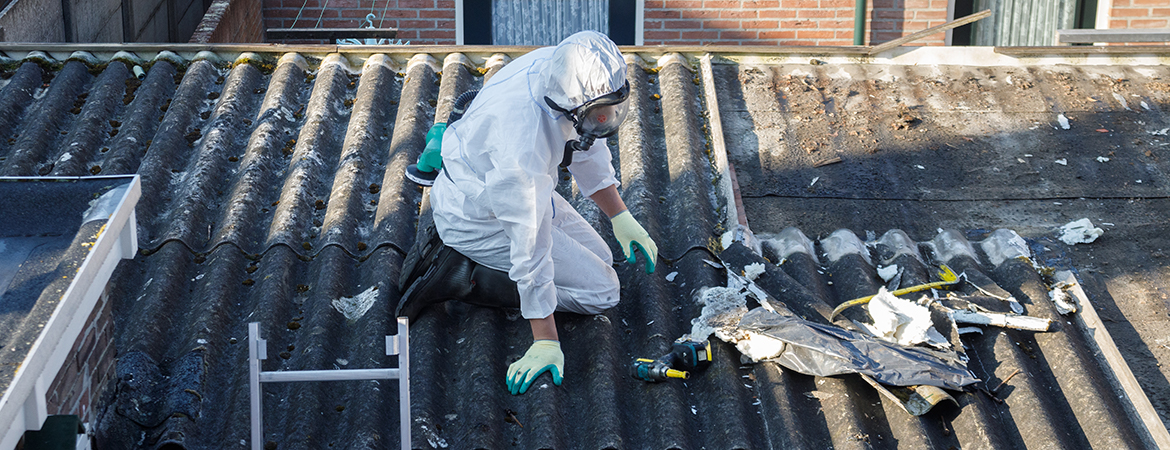What do storms have to do with asbestos?
Storms can loosen and rip apart materials built with asbestos, launching these invisible cancer-causing particles into the air we breathe.

Kentuckians may be all too familiar with strong wind storms and tornadoes that threaten to wreak havoc on homes and businesses… but what do natural disasters have to do with asbestos?
The two topics may be more closely related than you think. Eight out of 10 homes built before 1980 still contain asbestos today. Asbestos is a naturally occurring mineral fiber that was used in an abundance of home-building materials prior to the substance’s regulation in the 1970s. It can be found in common household items like insulation, tile, roofing, and siding.
When asbestos is disturbed, it can cause life-threatening illnesses such as lung cancer, mesothelioma, and asbestosis. Storms can loosen and rip apart materials built with asbestos, launching these invisible cancer-causing particles into the air we breathe. Different types of natural disasters present a variety of exposure risks. While tornados may carry asbestos debris from one location to another, floods may taint local waterways and neighborhoods with the hazardous fragments.
When cleaning up storm damage, the Kentucky Department for Environmental Protection recommends that all storm-related debris should be treated as potentially asbestos-contaminated material. You can protect yourself from asbestos exposure in the aftermath of an extreme storm by preparing an emergency kit ahead of time.
The Mesothelioma Cancer Alliance recommends an emergency clean-up kit contain the following:
- Masks
Masks should fully cover the nose and mouth for each member of the family (pets included!) to stop inhalation of airborne asbestos fibers. The Mesothelioma Center recommends only using certain masks approved by the National Institute for Occupational Safety and Health, such as the N-100, P-100, or R-100 models, all of which filter more than 99% of airborne particles.
- Bottled water
These can be used to wet any asbestos products, which will make the fibers less likely to become airborne.
- Gloves, protective eyewear, booties, and disposable clothing
Asbestos can be transferred from one location to another on your clothes and shoes. Disposable clothing will keep fibers from traveling.
- Garbage bags
It is not recommended that you attempt to remove asbestos materials on your own. However, if you have to remove materials before a licensed professional can arrive on the scene, wet the asbestos and place the material carefully in a double garbage bag while using disposable clothing. Seal the bags completely and clearly identify that they contain asbestos.
Despite decades of regulations on this dangerous environmental hazard, thousands of people are still dying of asbestos-related cancer each year. Proper education and prevention can help keep you and your family safe from this inconspicuous carcinogen.
>> At Kentucky Farm Bureau, we’re just as invested in your home as you are. We help protect what’s important to you – from farms and fishing boats to minivans and mobile homes. To see a full list of products we insure, click here.
